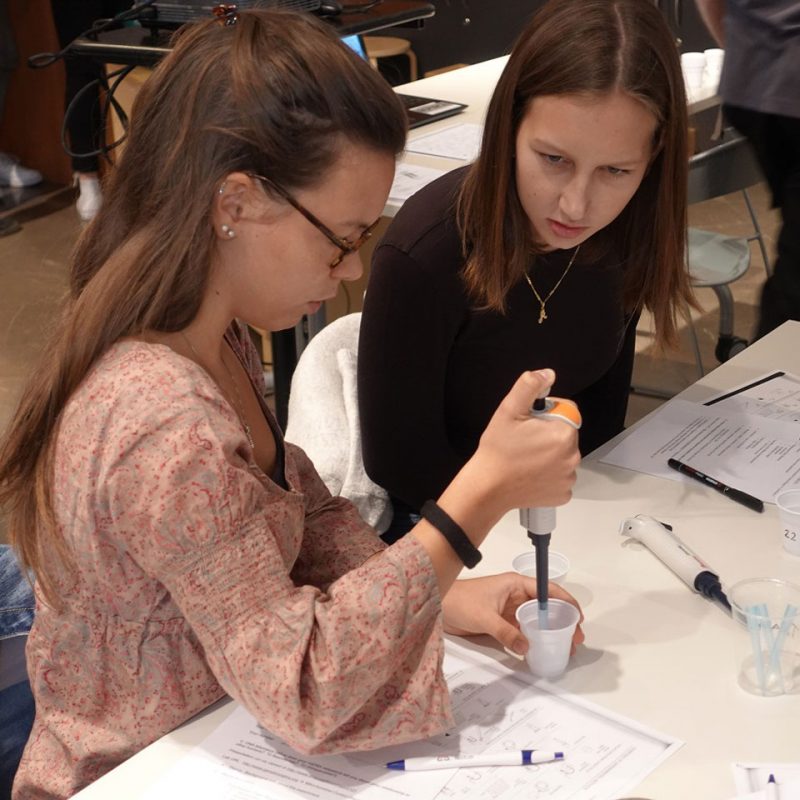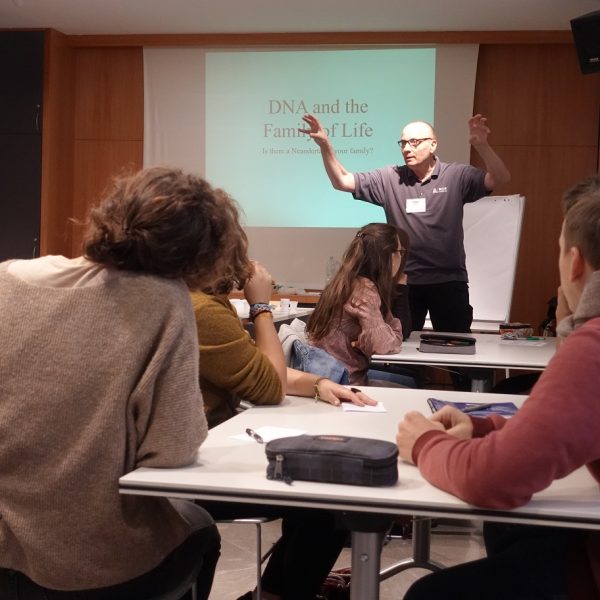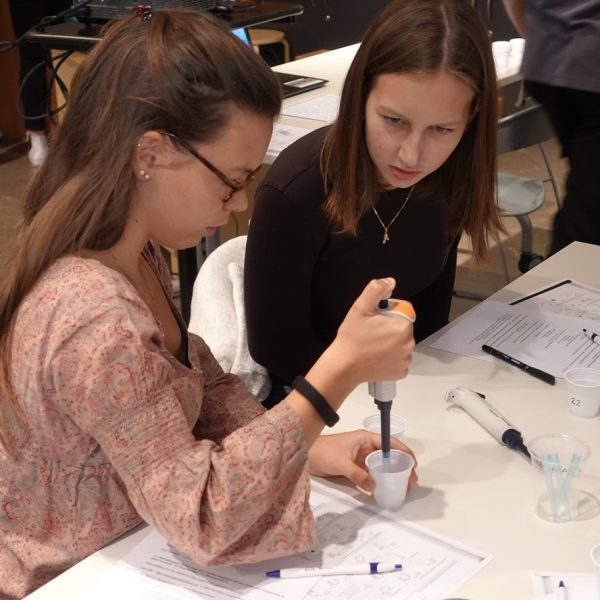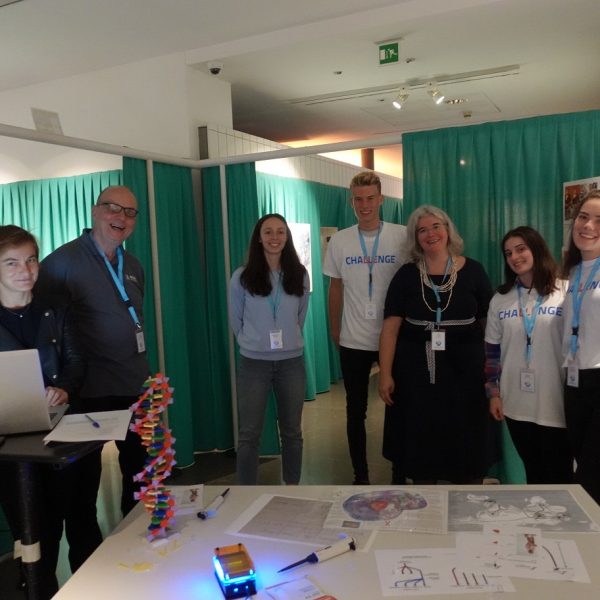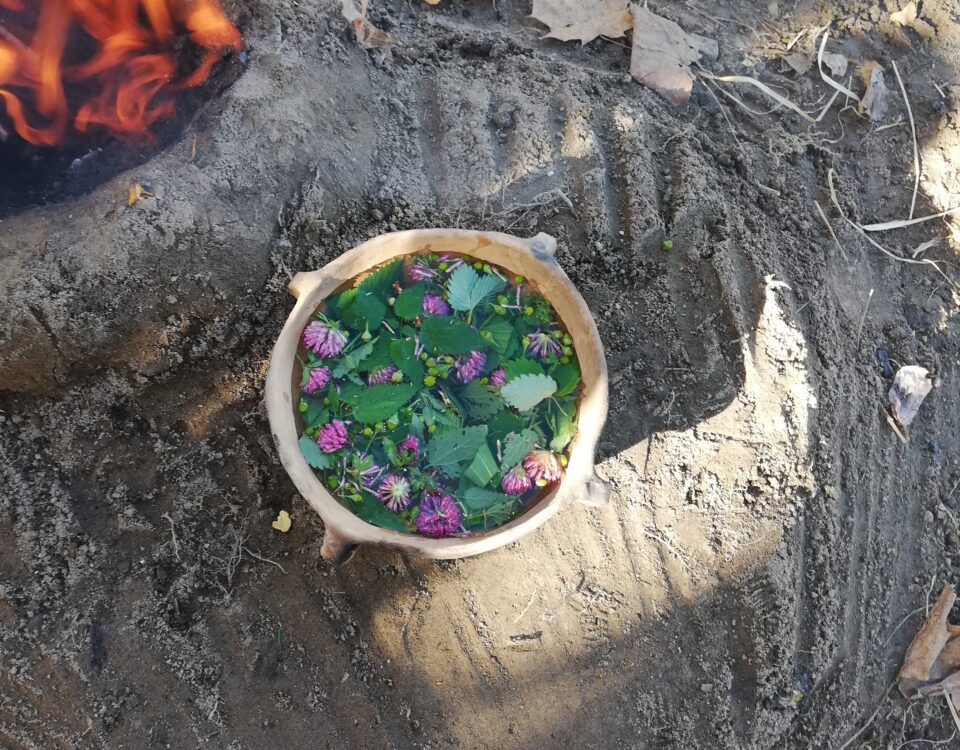
What does my DNA have to do with Ötzi?
As a part of “Science Week” at the South Tyrol Museum of Archaeology, two classes from the Bolzano Realgymnasium learned how to establish degrees of kinship between themselves and population groups from around the world using their own DNA. In addition they learned how their DNA relates to people who lived in the past, such as Ötzi or the Neanderthals.
They started with tough laboratory work: The prerequisite for the experiment was to extract their own DNA from their cheek pouch cells and amplify it so that it could be examined.
After all DNA samples had been sequenced by a professional laboratory in Germany, the exciting part of the workshop began: first, the comparison and analysis of their own DNA with that of other populations from around the world and second, the comparison with the past in the form of Neanderthals or Ötzi’s DNA. Well, to be more precise, actually with his mother. The nuclear DNA used in the analysis wasn’t inherited from fathers, but from the mitochondrial DNA we all receive from our mothers, which is easier to extract.
Their exciting results won’t be revealed at this point. The students will present them during the “Long Night of Research” on Friday 27.9.2019 in the South Tyrol Museum of Archaeology from 5pm-10pm.
The workshop was made possible in cooperation with the DNA Learning Center in New York.
Professor: Dr. Uwe Hilgert.
Instructor at the Realgymnasium: Dr. Claudia Zander
Photos: (c) South Tyrol Museum of Archaeology, DNA workshop 23.-27.9.2019 and Researcher’s night
Of carrots and men
Interview with Associate Research Professor Uwe Hilgert 29.9.2019
How can you determine degrees of kinship from DNA? Or in other words: how can you calculate how closely we are related to one another?
In DNA analysis you can generally assume that the number of differences reflects a measure of how closely individuals are related: the less difference there is, the closer the relation is.
Who are our closest relatives?
It’s likely that Neanderthals are most closely related to modern humans. With progress in the methods and new techniques this assessment may change.
How distant is Ötzi from us? How closely related are we to Ötzi?
That’s difficult to answer with the DNA. DNA shows that Ötzi is among us modern humans. 5,000 years, give or take, generally don’t make much of a difference for DNA.
What can Ötzi’s DNA tell us? Why is the DNALC working with Ötzi’s DNA?
Ötzi’s DNA is fantastic evidence that DNA can reflect and reveal kinship.
What’s the verdict, do we descend from Ötzi or from Neanderthals? What could the students find out?
In our DNA there is no indication that we descend from Ötzi or from Neanderthals. However, the students‘ DNA experiment did show that all modern humans, and that includes Ötzi, are much more closely related than any modern human is to Neanderthals. Their DNA also indicates that we are not descendants of Neanderthals, but that we share a common ancestor with Neanderthals, just like we do with chimpanzees. Neanderthals are therefore distant cousins of ours and not ancestors.
Why is it so important to work with young people on the topic of DNA?
DNA is the hard drive of life. It doesn’t do anything itself, but it contains all the information needed to shape living things: human-DNA for humans and carrot-DNA for carrots. Understanding DNA leads to many new occupations and to a completely new type of medicine.


